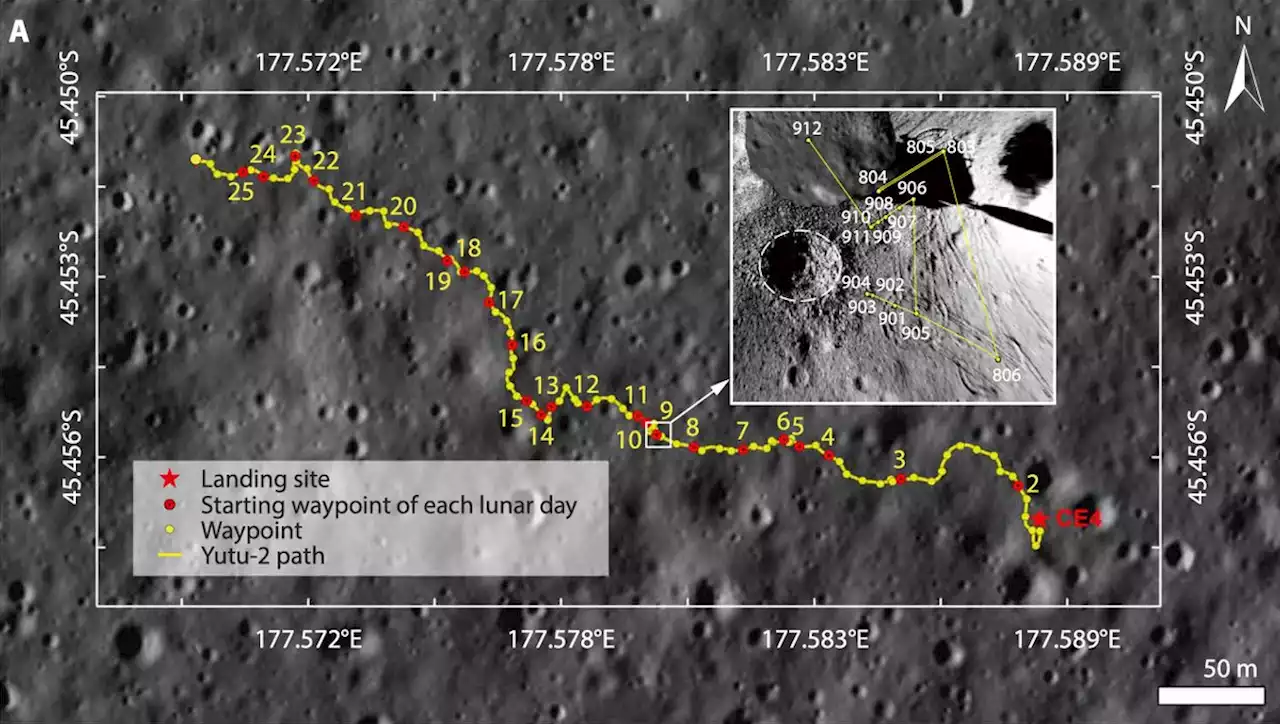Greetings from the lunar far side: A new SciRobotics report on the Yutu-2 rover details new geology of the Moon over two years and 600 meters of roaming.
) in both the shallow regolith and the deeper geological strata. The shallow regolith can be separated into three distinct layers according to the distribution, quantity, and dimension of inhomogeneities illustrated in the high-frequency LPR measurements . At least five strata were detected to the depth of 328 m , for which a uniform basal layer may be present between 38 and 52 m, followed by further basal layers from different lunar geological periods.
Although the interesting soil cohesion phenomenon is analyzed to be regional with multiday observations, intensive study of the chemical composition and physical properties of the lunar regolith is necessary to be carried out for further analysis. More notable findings are expected to be discovered by taking full advantage of the rover’s capability.
On the basis of in-depth understanding of the lunar farside, more powerful locomotion, higher intelligence, and advanced scientific payloads are needed for future lunar exploration with space robots in larger scales and harsher environments. For example, legged robots, hybrid wheel-legged robots, or tethered rovers can be considered for future lunar crater or cave exploration.
